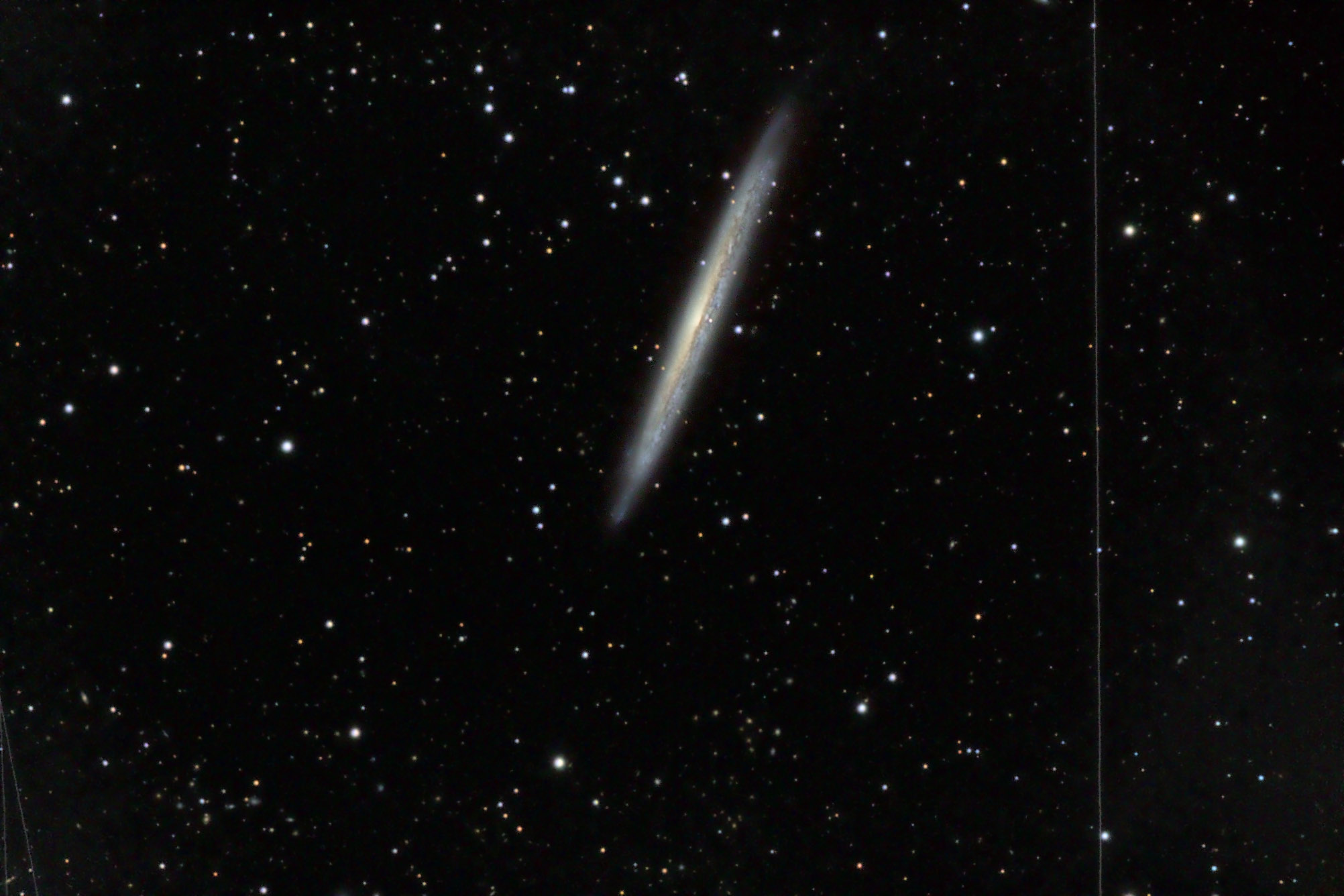| Description | Images |
Object name: NGC5906Designation(s): NGC5906, NGC5907, Usually called the Splinter Galaxy, it is located in southwestern Draco. While many NGC galaxies carry two NGC designations those refer to the entire galaxy. That isn't the original situation here. It seems William Herschel found the bright eastern side on May 5, 1788. I say that as his coordinates point to that side of the object. Later on April 13, 1850 George Stoney using Lord Rosse's 72" reflector saw the western half. Dreyer gave the eastern side Herschel found the NGC 5907 number and the western side NGC 5906 to keep them in right ascension order. Today most consider NGC 5907 the identity of the entire galaxy though that wasn't the case in Herschel's time. For instance, NED gives both the NGC 5706 and 5707 number to the galaxy while Seligman notes the distinction but adds most treat it the way NED does. The western side is very blue while the eastern side is much brighter and somewhat red in color. Nearly all the detail is in the western half, below the dust lane. I find many different distances for this galaxy. For now, I'll say it is 40 or so million light-years away though red shift puts it closer, that is often less accurate than other distance estimate methods. Related Designation(s):2MASX J15155368+5619438, 2MASXi J1515536+561943, 2MFGC 12346, 2XMM J151554.2+561944, 87GB 151437.2+562929, 87GB[BWE91] 1514+5629, AKARI J1515535+561946, CGCG 1514.6+5630, CGCG 274-038, CGCG 297-010, EON J228.973+56.329, FGC 1875, HDCE 0903 NED003, HOLM 704A, IRAS 15146+5629, IRAS F15145+5630, ISOSS J15159+5617, LDCE 1112 NED003, LGG 396:[G93] 003, MCG +09-25-040, NGC 5906, NGC 5907, NGC5906, NGC5907, NSA 145978, PGC 054470, RFGC 2946, RX J1515.9+5619, SDSS J151553.77+561943.5, SDSS J151553.77+561943.6, UGC 09801, UZC J151554.0+561946, VC:[JML2000] 09, [M98j] 240 NED03, [RHM2006] SFGs 003, [SLK2004] 1109, [VPK96] C27, [WB92] 1514+5629, |

